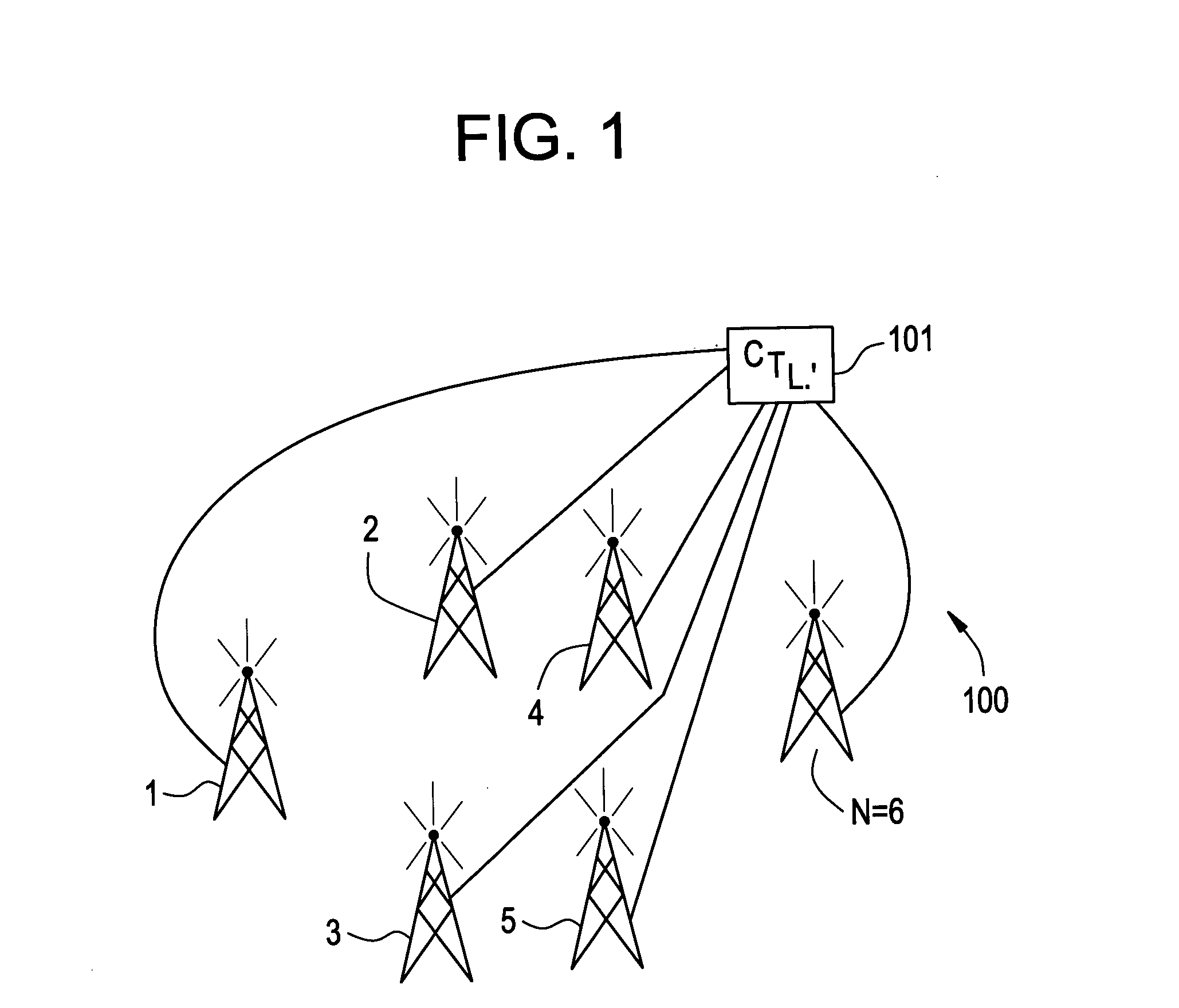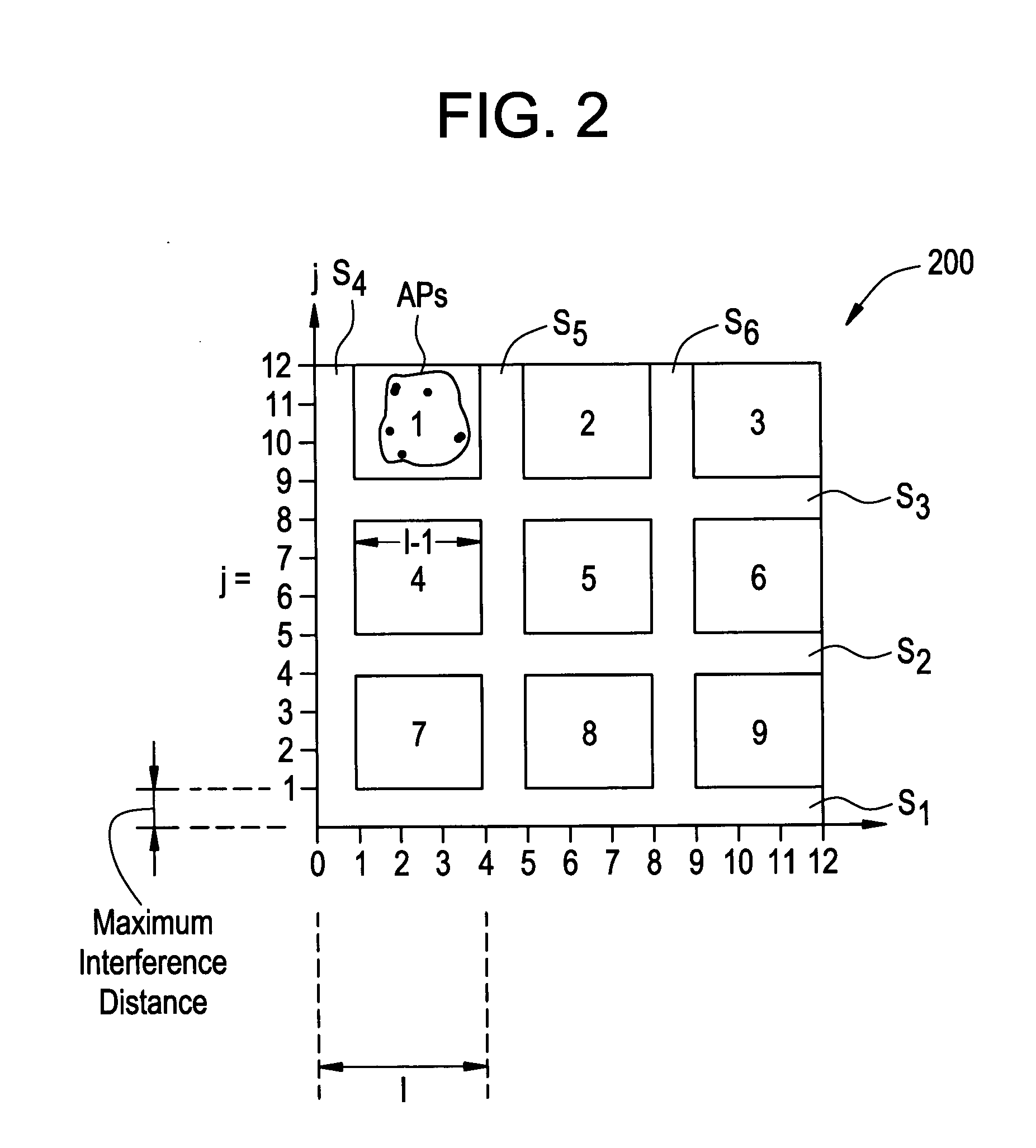Computing optimal channel allocations using decomposition methods and related devices
a decomposition method and channel allocation technology, applied in the field of computing optimal channel allocation using decomposition methods, can solve the problem of requiring a long period of time to compute actual channel allocation
- Summary
- Abstract
- Description
- Claims
- Application Information
AI Technical Summary
Benefits of technology
Problems solved by technology
Method used
Image
Examples
Embodiment Construction
[0014] Referring now to FIG. 1, there is shown a simplified diagram of APs 1, 2, . . . N making up a WLAN 100. Also shown is a controller 101 operable to control each of the APs. In one embodiment of the present invention when the APs are base stations, the controller 101 may comprise a base station controller. The controller 101 is operable to carry out the features and functions of the present invention discussed above and below in an attempt to allocate a channel to each AP 1,2, . . . N within a reasonable time period using approximations of an optimal channel allocation scheme.
[0015] Before discussing details of the present invention, it should be understood that the present invention adopts the frame-based channel allocation architecture disclosed in U.S. application Ser. No. ______ referred to above. In this architecture, only those APs that are allocated a channel during a time frame, t, are allowed to transmit. Those APs that are not allocated a channel are not permitted to...
PUM
 Login to View More
Login to View More Abstract
Description
Claims
Application Information
 Login to View More
Login to View More - R&D
- Intellectual Property
- Life Sciences
- Materials
- Tech Scout
- Unparalleled Data Quality
- Higher Quality Content
- 60% Fewer Hallucinations
Browse by: Latest US Patents, China's latest patents, Technical Efficacy Thesaurus, Application Domain, Technology Topic, Popular Technical Reports.
© 2025 PatSnap. All rights reserved.Legal|Privacy policy|Modern Slavery Act Transparency Statement|Sitemap|About US| Contact US: help@patsnap.com



